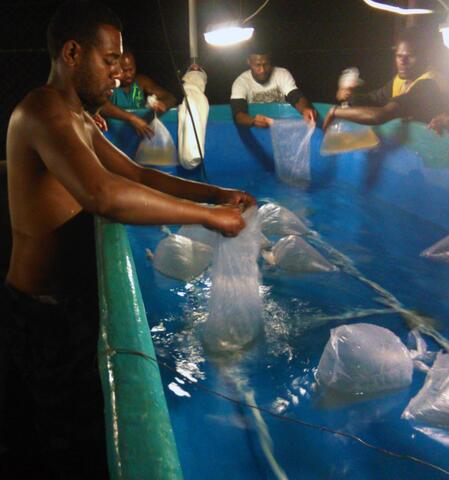Promoting sustainable aquaculture by strengthening capacity to manage aquatic biosecurity risks
Aquaculture is an important and expanding sector in the Pacific, providing food, creating jobs, and improving livelihoods for the region and its communities. However, the sector faces significant biosecurity risks with the movement of people and goods, import of various agriculture products including seafood, and frequent introduction and reintroduction of aquatic species for aquaculture purposes. Aquatic animal diseases are a significant threat to the sustainability and productivity of aquaculture. It is vital to heed the potential for transboundary diseases to spread rapidly and uncontrollably, bringing long term social and economic damage. We need to protect farmed aquatic species from pests and disease as well as conserving our rich and highly diverse natural aquatic environment.

Aquatic biosecurity is a system of standardised protocols to deal with biological risks in aquatic environments and is therefore key to managing biological risks in aquatic environments, such as the risk of exotic pathogens and invasive aquatic species. Good aquatic biosecurity measures are vital for maintaining healthy organisms, reducing the risk of acquiring diseases and pests in aquaculture facilities, and harvesting high-quality yields. This approach focuses on three areas: aquatic health management, control and management of aquatic invasive species, and food safety.
Aquatic biosecurity actions need a holistic approach that involves government officers and members of the private sector with expertise in different fields, including the environment, aquaculture, fisheries, agriculture, livestock and human health. In a region like the Pacific – which has comparative advantages, but also many technical and logistical challenges – a regional framework is necessary for facilitating the harmonisation of legislation, capabilities and infrastructure, and protocols related to aquatic biosecurity.
Our aquaculture experts work to strengthen members’ capacity in managing aquatic biosecurity risks to ensure that farmed species are healthy and free of diseases and pests, as well as protecting and conserving biodiversity in the aquatic environment. Technical support in aquatic biosecurity is provided to members through the Regional Framework on Aquatic Biosecurity, which was developed through an extensive consultative process with members and other stakeholders. This framework focuses on key areas such as governance, practices and infrastructure, aquatic species introductions and transfers, and training and cooperation.
